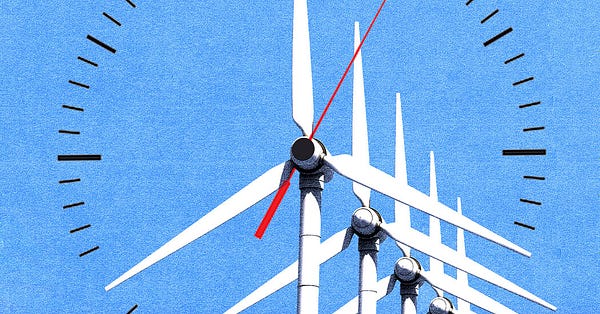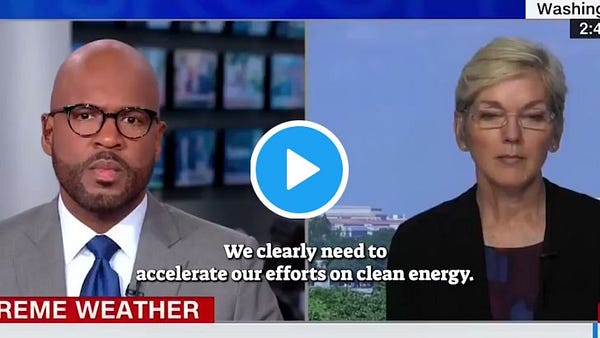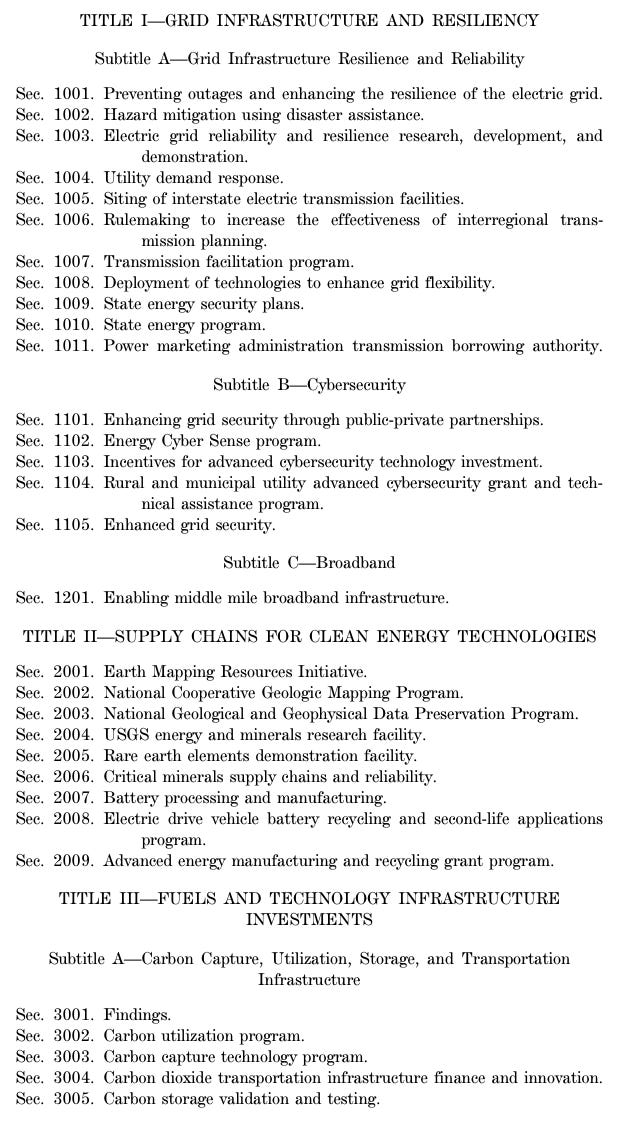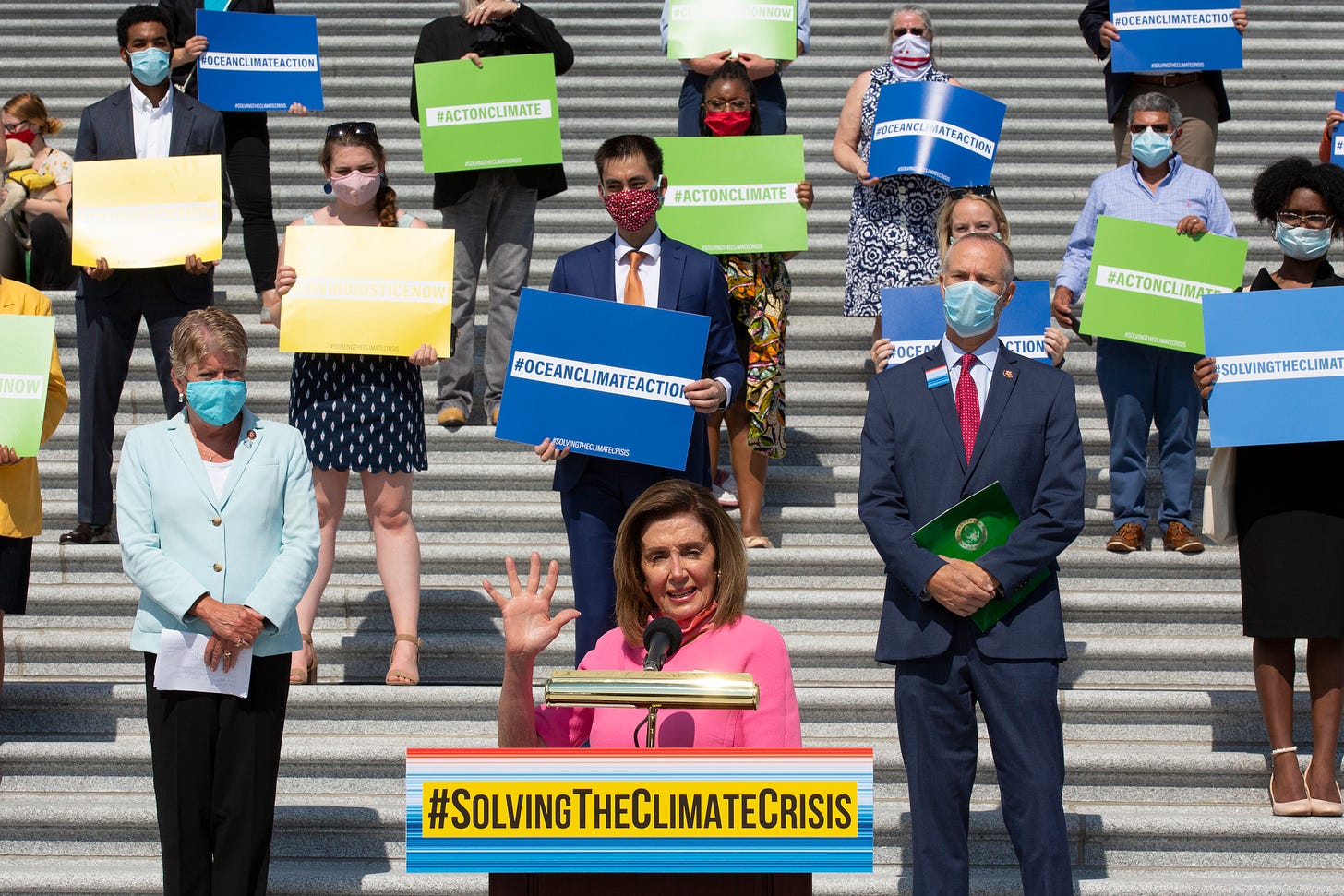Last week, I wrote that there is no “moderate” position on climate change. Either we act rapidly and at massive scale to avoid the worst consequences … or we suffer the worst consequences. Either outcome involves radical change. There’s no avoiding radicalism.
Lots of activists, politicians, and ordinary citizens understand this need for ambitious action — they are convinced by the scale and severity of the problem — but there is less clarity about what qualifies as ambitious.
In an atmosphere of legislative scarcity, when tough decisions are being made and policies are being prioritized, what exactly should climate advocates be pushing for? What’s a simple way to distinguish between climate policy and good climate policy?
In the great climate policy feast, what is the entrée and what are the side dishes?
We lack a common framework for judging climate policy, which creates a fog in which dedicated advocates can lose focus and malefactors can get up to shenanigans. Within the fog, people tend to pick their favorite markers of climate commitment based on instinct and affective affiliation (shut down pipelines! ramp up nuclear power! impose a carbon tax!). What counts as good policy becomes a matter of identity rather than what would most effectively ratchet down carbon emissions.
The fog allows weak and marginal policies to be branded as moderate, or, other times, to masquerade as radical. It leads activists to diffuse their energy, while core policies often don’t receive the coordinated support they need.
We need to clear away the fog, fast. Policy decisions are being made over the next few weeks that will reverberate for decades. This is crunch time on climate policy and everyone who wants serious action needs to be (at least roughly) aligned.
So I want to spend a few minutes laying out a simple framework to help people think about how to prioritize climate policies. It doesn’t cover everything, but it’s a pretty good rough-and-ready guide.
Clean electrification is the entrée. Everything else is a side.
How can the US hit net-zero emissions by or before 2050, a goal shared by almost every Democrat and, at least rhetorically, by some Republicans?
The key is to immediately begin reducing emissions and maintain a rapid pace of reduction for the coming three decades. That is the only way we have a shot. If we wait another decade to start rapid reductions, the curve will simply be too steep. It has to start now.
So we can think of the work in two parts. Job One is to rapidly push fossil fuels out of the system using technologies and strategies that we have on hand, such that we reduce carbon emissions by around 50 percent by 2030. Job Two is to research and develop the technologies and strategies we will need to continue rapidly reducing emissions from 2030 onward, such that we hit net-zero on or before 2050.
Job Two is important. But Job One is the main thing. Job One is the entrée. Without it, you don’t have a meal.
What does Job One consist of? This is important: while different climate models disagree about which policies and technologies will be needed to clean up remaining emissions after 2030, virtually all of them agree on what’s needed over the next decade. It’s clean electrification:
clean up the electricity grid by replacing fossil fuel power plants with renewable energy, batteries, and other zero-carbon resources;
clean up transportation by replacing gasoline and diesel vehicles — passenger vehicles, delivery trucks and vans, semi-trucks, small planes, agricultural and mining equipment, etc. — with electric vehicles; and
clean up buildings by replacing furnaces and other appliances that run on fossil fuels with electric equivalents.
Or as I summarize it: electrify everything!
Clean electrification is the entrée. If you decarbonize electricity, transportation, and buildings, you’ve taken out the three biggest sources of emissions in virtually every country. The technologies and policies we need to do it exist today, ready to deploy.


Exactly how much of the US economy can be decarbonized through clean electrification is an open question. Saul Griffith of Rewiring America is an optimist. He thinks electrification can reduce between 70 and 80 percent of US emissions by 2035, and probably in the 90s eventually. (Listen to my podcast with Griffith.)
We’ll see. Today, there are all sorts of edge cases that are difficult to electrify — bigger trucks, airplanes, trains, ships, steel, concrete, a variety of high-heat industrial applications — that might be easier with cheaper zero-carbon electricity and a decade of innovation. There’s no way to know in advance how far electrification can get, though it’s worth noting that critics have underestimated it at every stage thus far.
Regardless, whether it can ultimately get at 60 or 90 percent, clean electrification will do the bulk of the work reducing emissions over the next decade. It is the entrée.
None of this is to diminish the scale and difficulty of Job Two — all the side dishes. We need those too. We’ll need lots of zero-carbon liquid fuels for industry, ships, and airplanes, so we need to work on developing clean hydrogen. We’ll need to figure out some sustainable biomass options, along with a variety of ways to capture and store carbon dioxide. We’ll need focused innovation in geothermal energy, long-term energy storage, energy management software, and all sorts of other things. Much work remains to be done.
Nonetheless, clean electrification — done in a way that honors and protects frontline and vulnerable communities — needs to be the top item on every list of climate demands. It would be fatal for climate activists to take it for granted or assume it’s taking care of itself. It is not.
Climate policy that’s all side dishes is not “moderate”
As I wrote last week, the danger is that weak and insufficient climate policy gains a reputation as moderate.
But the danger is more specific than that: it’s that moderate policy will be all side dishes and no entrée. It will be all policies that prepare to phase out fossil fuels a decade hence … and none of the policies that phase them out today.
This type of approach is on particularly clear display these days from Republicans and their nascent “climate caucus.” Republicans in the House recently introduced a package of climate policies centered around carbon capture (helpful to fossil fuels), nuclear power (no threat to fossil fuels in the coming decade), and tree planting (irrelevant to fossil fuels).

But it’s also what’s passing for “bipartisan” climate policy. A particularly on-the-nose example is the Clean Energy Future through Innovation Act of 2020, introduced in the House by Reps. David McKinley (R-WV) and Kurt Schrader (D-OR). It would establish a clean energy standard to decarbonize the electricity sector … in 2030. Until then, we’ll have a “decade of innovation,” whee!
Needless to say, “start reducing emissions in 2030” is the very definition of a climate policy meal with no entrée.
Our beloved West Virginia Sen. Joe Manchin (D) recently produced an even more elaborate version of an all-side-dishes climate package, in the form of a 423-page bill he released, somewhat out of the blue, earlier this month. It was unclear if the bill was meant to be part of the bipartisan infrastructure package or something else. Mainly it reads like a Manchin wish list.
It’s a fascinating document. It’s got a lot of policies in it. Here’s one page of the bill’s 3.5-page table of contents:
And not just policies, but good policies. There’s virtually nothing in it I would disagree with on the merits. Clean electricity will need new grid infrastructure and more robust supply chains and better cybersecurity. Energy efficiency is great; so is keeping existing nuclear power plants open. I’m even down with carbon capture and utilization research.
But it’s all side dishes and no entrée. It’s all preparation for pushing fossil fuels out with none of the actual pushing. It’s all kinds of stuff that will supplement clean electrification without the clean electrification itself.
This is the kind of climate policy that is in danger of being branded “moderate” — the kind that does everything but rapidly push fossil fuels out of the energy system in the coming decade.
Progressives need to demand an entrée
Clean electrification is the core of any ambitious climate policy. Without it, we’re still spinning our wheels, innovating without deploying what we’ve already innovated.
There is very little for clean electrification in the bipartisan infrastructure package recently unveiled by Manchin’s gang of ten in the Senate, save some money for transmission lines and electric buses.
So far, progressive Democrats aren’t making a fuss about the bipartisan package because they have assurances from both Senate Majority Leader Chuck Schumer (D-NY) and House Speaker Nancy Pelosi (D-CA) that alongside the bipartisan bill there will be a reconciliation bill, which can get through the Senate with only Democratic votes.
Pelosi is under no illusions that anything that directly challenges fossil fuels will get any Republican votes. "I don't think there's any question that the more bipartisan a bill is, the less green it is," she said last month, because Republicans "are in the pocket of the fossil fuel industry."
So progressives are looking to reconciliation to pass the rest of President Biden’s climate agenda.
The climate plan Biden campaigned on, the infrastructure plan he released as president, and the plans released by Democrats in Congress all contain extensive clean-electrification measures, including a clean energy standard to decarbonize the grid by 2035, tax and point-of-purchase incentives for electric vehicles, and programs to electrify buildings. Those — implemented with a strong focus on environmental justice — are the key climate pieces that need to be included in the reconciliation bill. They are the entrée.


The question around reconciliation will not be Republican support, but support from Manchin and his crew of self-styled moderates. They will push for compromises that go easy on fossil fuels. Progressives need to hold the line: only by pushing fossil fuels out the system, beginning immediately, can Democrats meet the challenge of the moment.
That means clean electrification: the policy that makes climate legislation a meal.



















Share this post